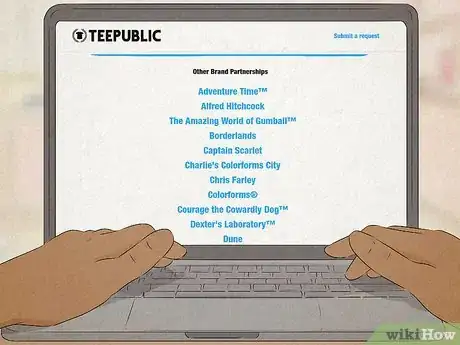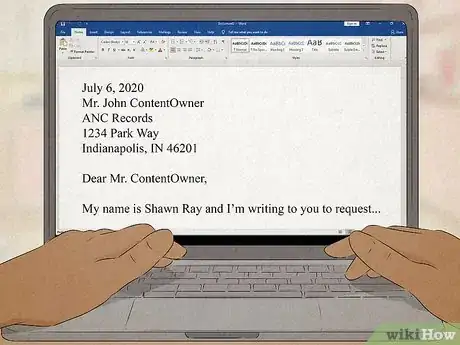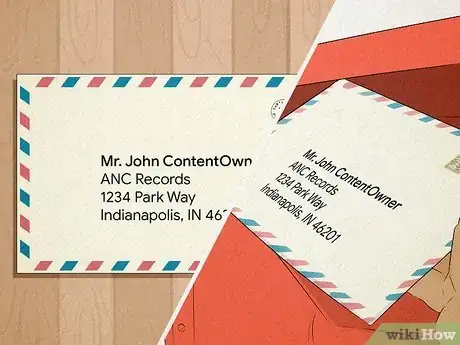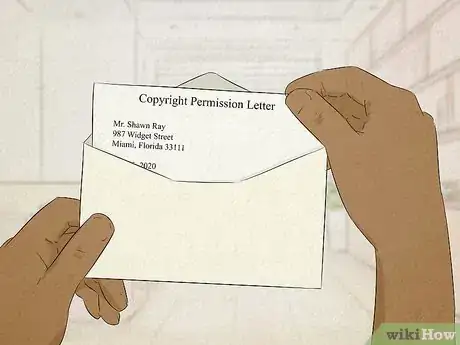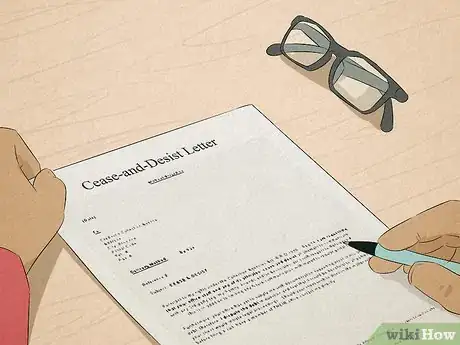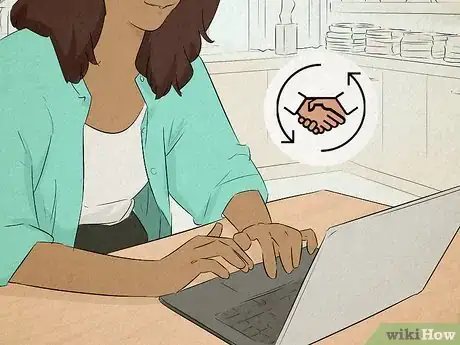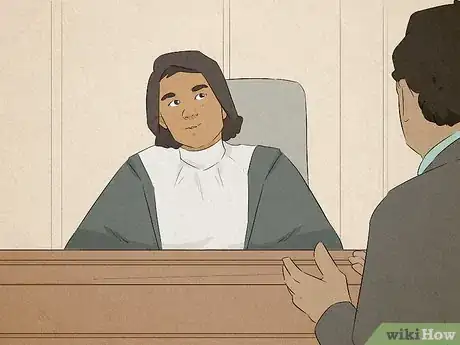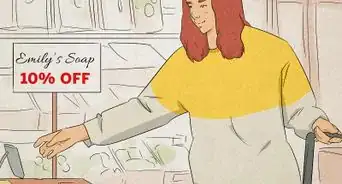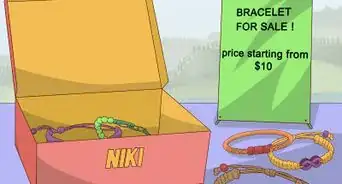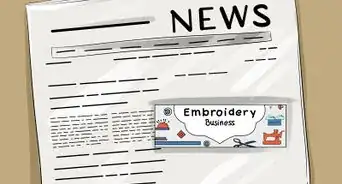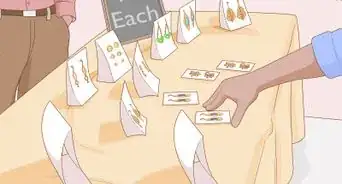This article was co-authored by Jennifer Mueller, JD. Jennifer Mueller is an in-house legal expert at wikiHow. Jennifer reviews, fact-checks, and evaluates wikiHow's legal content to ensure thoroughness and accuracy. She received her JD from Indiana University Maurer School of Law in 2006.
There are 15 references cited in this article, which can be found at the bottom of the page.
This article has been viewed 102,297 times.
Technically speaking, there's nothing illegal in the US about making and selling fan art because copyright isn't enforced criminally. Rather, copyright owners enforce their rights by suing infringers in federal civil court. If they win, they could get money from you. However, if they don't win (or if they never sue in the first place), nothing happens.[1] So it might seem like no big deal, but federal lawsuits are complex and expensive to fight. If you don't want that threat hanging over your shoulder, your best option is to try to get permission from the copyright owner to make and sell your fan art. Some artists are really stingy about this, but others give permission freely if you only ask.
Steps
Asking for Permission
-
1Identify who owns the copyright in the original work. In most cases, this is as easy as looking for a copyright notice and then seeing what name appears after the copyright symbol ( © ). If you're doing fan art of an older character or work, however, you might have to dig a little deeper to make sure the copyright hasn't changed hands.[2]
- Typically, you'll have a company that owns the right to the characters or other work that you want to use in your fan art. Check out the corporate site of that company for contact information.
- Look for the person to reach out to for copyright inquiries. If no one is listed specifically, work your way up the chain asking who you would need to speak to about copyright issues.
-
2Look for a fan art program offered by the copyright owner. Many major copyright owners (think movie studios and production companies) offer fan art programs that allow fans to create art based on their characters within certain parameters. Go to the corporate website of the copyright owner to see if such a program exists and, if so, what its specifications are.[3]
- Keep in mind that many of these programs are notoriously stingy — especially if they're related to long-running, popular characters. For example, Paramount allows fans to make Star Trek fan films, but they can't be more than 15 minutes long.[4]
- Some sites that provide selling platforms, such as RedBubble[5] and TeePublic[6] , also have brand partnerships that allow you to sell fan art with permission from the copyright owner.
Advertisement -
3Write a formal letter requesting permission to sell your fan art. Address your letter to the copyright owner and explain who you are and what you want to do. Be clear about the fact that you want to sell your fan art and let them know where you plan to sell it. At the end of your letter, explicitly ask them for permission to use their work to make fan art.[7]
- Provide your contact details and give them a deadline to respond (say, within 10 days of receiving your letter). But be nice about it — remember, you're asking them to do something nice for you, not making a demand.
- If you already have samples of the art that you want to produce, you might want to include a piece of it so they can see what you want to do. Otherwise, you might include samples of your other work so they have some idea of the type of artist you are.
- You could also include the URL of any website where you share or sell your art, such as an Etsy or Deviant Art page, as well as your social media information.
-
4Send your letter to the copyright owner. Look for a correspondence address on the copyright owner's website. You might need to send the letter to the copyright owner's agent or other representative. Mail your letter using certified mail with return receipt requested, so you know when the copyright owner receives your letter. Based on this, you'll know when to expect a response from them.[8]
- Keep the green card you get in the mail after the copyright owner receives your letter. The easiest thing to do with it is to staple it to a printed copy of the letter you sent. That way you have them both together.
-
5Wait for a response from the copyright owner. Copyright owners will often get back to you within a reasonable time (especially if they're going to say "no"). If they've made some sort of counter-offer or proposed a licensing fee, consider whether you can accept that arrangement and get back to them as soon as possible.[9]
- If they give the thumbs-up on your project, you're good to go! Just keep that letter in a safe place in case they have a change of heart later.
- The unfortunate thing about a copyright owner refusing permission after you've asked is that your fan art project is pretty much dead. You've put them on notice about what you want to do, and you know they're not okay with you doing it. That amounts to willful copyright infringement, which can put you on the hook for some big-time fines.
Getting Out of Trouble
-
1Read the cease-and-desist letter to find out how much wiggle room you have. If a copyright owner gets wise to the fact that you're making fan art from their original work and they're not happy about that, they'll likely send you a cease-and-desist letter. This letter will probably be written by their attorney and will include a lot of intimidating and threatening language, but don't panic. Skim over that and get to the heart of what they're asking you to do.[10]
- These letters tend to follow a formula, so if you skip down to the end of the letter, you'll likely see a numbered list or bullet points that outline what the copyright owner wants from you.
- If they've tossed out an alternative, such as a licensing fee, consider whether that's something you can afford.
-
2Write a response to the letter as soon as possible. Decide the extent to which you're willing to comply with the demands laid out in the letter, then start on your response. You can hire an attorney if you want, although you don't necessarily need to do so at this stage. Simply write them a letter to let them know that you received theirs and go from there.[11]
- Let them know if you've decided to stop selling your fan art, and that should be the end of it (unless they want money from you for the copies you've already sold).
- If you're not willing to comply with their demands, say so outright — don't beat around the bush or offer to negotiate if you know you're not going to comply. Be direct.
- You can always set forth your argument if you truly believe that your art doesn't actually violate their copyright. However, if you're going to go this route, it's usually best to talk to an attorney first. Remember, you're likely writing this letter to an attorney who specializes in copyright law.
-
3Negotiate your use of the work with the copyright owner. You can't use copyrighted work without the owner's permission — but that doesn't mean you can't negotiate for permission after the fact. If your fan art is already well-established and you have a loyal following, you might be able to pay a licensing fee to the copyright owner.[12]
- Many copyright owners appreciate fan art and might be willing to work with you. However, it's not going to come free at this stage. The owner has already let you know they're not happy with your use, so expect to bargain for a licensing fee. If that's not something you can afford, your fan art project may be dead.
- This strategy likely won't work with the largest and wealthiest copyright owners, such as Disney. Unfortunately, they likely won't negotiate licensing rights with you, as they only negotiate multi-million-dollar contracts with large companies and distributors.
-
4Hire an attorney immediately if you get served with a lawsuit. Copyright infringement cases take place in federal court, so it's essential that you have a lawyer on your side. The copyright owner will likely have a whole team of lawyers on their side and you don't want to go up against that alone. Talk to several attorneys who have experience in copyright litigation, then pick the one that best suits your needs and budget.[13]
- If you're low on funds, look up "Lawyers for the Arts." Most states have a branch of this nonprofit organization of volunteer attorneys. They'll help you with your case and might even agree to represent you for free.[14]
-
5Argue that your fan art constitutes fair use. While this can be a stretch for most fan art, it might work for you if all else fails. The fair use doctrine promotes freedom of expression by allowing some use of a copyrighted work if it's considered fair. The two biggest categories are "commentary and criticism" and "parody."[15]
- Fan art typically doesn't fall into the "commentary and criticism" category because you're creating art related to something that you like. This category normally covers written reviews and news reports, not so much visual art.
- You might be able to convince a judge that your work was a parody, depending on the overall content of your fan art. For example, if you drew canonically straight characters as homosexual, you could say that you're ridiculing the original art's lack of gay characters.
Warnings
- This article covers how to sell fan art legally in the US. If you live in another country, the law could be very different. Consult a local intellectual property attorney.⧼thumbs_response⧽
- If you use titles or names in a way that could cause confusion and make people think your art is official art rather than fan art, you might run the risk of a trademark dispute as well. However, trademark disputes are rare with fan art.[17]⧼thumbs_response⧽
References
- ↑ https://www.copyright.gov/circs/circ01.pdf
- ↑ https://fairuse.stanford.edu/overview/introduction/getting-permission/
- ↑ https://www.ea.com/games/anthem/about/fan-art-kit
- ↑ https://hbr.org/2019/07/when-fandom-clashes-with-ip-law
- ↑ https://help.redbubble.com/hc/en-us/articles/360000938143-Fan-Art
- ↑ https://teepublic.zendesk.com/hc/en-us/articles/360022642254-Fan-Art-Program-Overview
- ↑ https://www.copyright.gov/circs/m10.pdf
- ↑ https://fairuse.stanford.edu/overview/introduction/getting-permission/
- ↑ https://copyright.universityofcalifornia.edu/use/obtaining-permission.html
- ↑ https://www.avvo.com/legal-guides/ugc/what-should-i-do-if-i-receive-a-cease-and-desist-letter-for-trademark-or-copyright-infringement-
- ↑ https://www.avvo.com/legal-guides/ugc/what-should-i-do-if-i-receive-a-cease-and-desist-letter-for-trademark-or-copyright-infringement-
- ↑ https://www.justia.com/intellectual-property/copyright/infringement/first-steps-in-a-copyright-infringement-case/
- ↑ https://www.justia.com/intellectual-property/copyright/infringement/
- ↑ https://glarts.org/
- ↑ https://fairuse.stanford.edu/overview/fair-use/what-is-fair-use/
- ↑ https://wastedtalentinc.com/are-fan-art-commissions-of-copyright-characters-even-legal/
- ↑ https://www.plagiarismtoday.com/2010/05/13/the-messy-world-of-fan-art-and-copyright/

